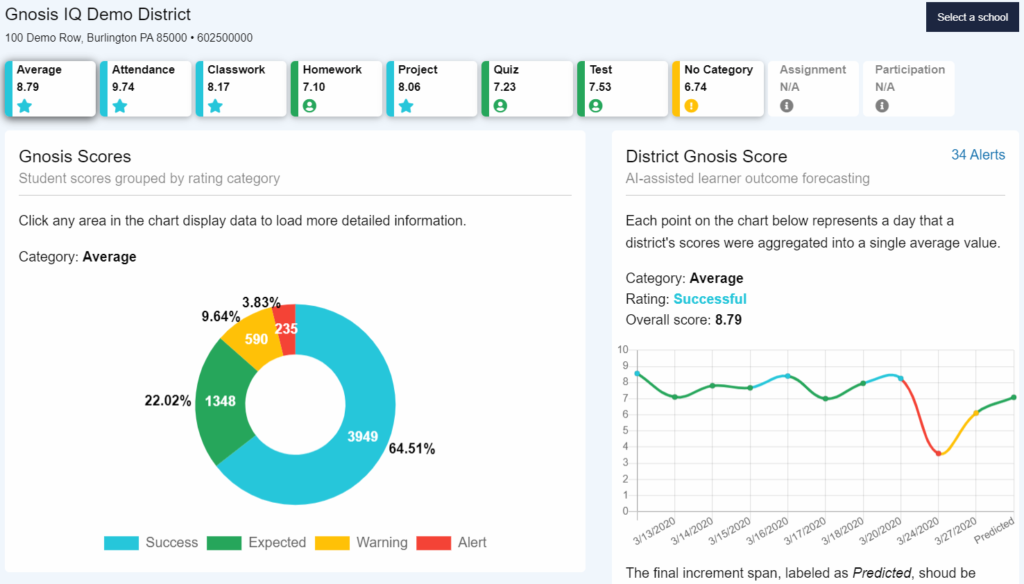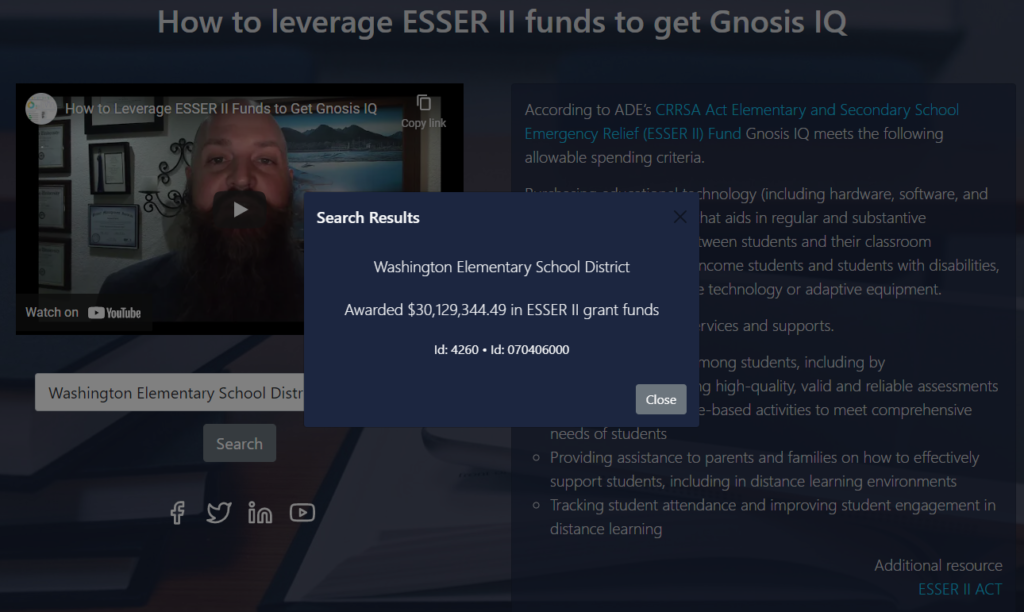
The pandemic has taken a toll on so many aspects of life, but one of the biggest concerns has been education and student performance.
2020 has sometimes been referred to as the “lost year.” Did our kids lose quality learning?
Gnosis IQ aims to provide a way for parents and other educators to find out a child’s learning loss.
Founder and CEO Ben Smith saw his own kids struggle with school during COVID-19 and it inspired him to provide a tool that could help parents, students and teachers see who was falling behind and make the necessary adjustments.
“With Gnosis IQ fully implemented, we have the power to transform education, reduce dropout rates and increase online engagement,” Smith says.
How does it work?
Gnosis IQ integrates with education software like Synergy, which is the main platform most school districts use to manage student information, including rosters, grades, assignments and more. Gnosis IQ is also OneRoster compliant, which is an educational data standard that most educational companies use to keep the data consistent across platforms. According to Smith, complying with OneRoster is why the company is able to integrate with just about everything on the market.
Gnosis IQ aggregates all of that data and provides stakeholders, from administrators to counselors to teachers to parents and students, with a way to see performance and trends of a district, school, class or individual student.
The aggregated data allows parents and educators to put a story together that shows how the student, class or school is performing and why. According to Smith, this type of aggregated data isn’t currently available all in one place.
The Gnosis IQ system has the ability to consolidate academic information and run through the algorithm with a single click.

Smith clarifies that Gnosis IQ is a performance indicator, not a gradebook. The platform doesn’t consider students’ letter grades. Instead the algorithm analyzes test scores, attendance and assignments to provide a Gnosis IQ score between 1 and 10. Higher scores indicate student success while lower scores might learning loss. For example, a Gnosis IQ score of 5 means a student is underperforming and at risk. A teacher or parent can then dive deeper into that student’s data and see exactly where the issues are.
The software can also predict the student’s performance, but Smith emphasizes the prediction isn’t a student’s destiny. The prediction is only an indicator of performance if a student’s needs aren’t addressed. The platform uses Amazon’s AI and machine learning engines to improve these predictions.
“The system gets smarter every time we put data into it,” Smith says.
How did Gnosis IQ get started?
Smith had already developed what he calls a “rudimentary algorithm” back in 2015 that could predict academic weakness. He revived it in the first part of 2020 as the pandemic got worse and he started talking to friends about whether or not the algorithm could work. He got good feedback and recruited some of his family and friends to help him move forward.
Smith officially formed Gnosis IQ as an LLC in July 2020. Later that summer, they implemented the product in the Isaac School District — the company’s first deployment — and pushed it out to the district’s principals that fall.
So far, the implementation is going well. Smith says that the Isaac School District superintendent, administrators and teachers are happy with it.
“We took a look at the Gnosis IQ software and realized the massive potential to impact the workload of teachers and our administrators,” says Isaac School District Dr. Mario Ventura. “One of my principals has seen a reduction of eight to 10 hours a week, just in the data he normally compiles.”
Launching “academic emotional performance” reporting
The next step in the company’s plan is to integrate “academic emotional performance” into the equation. This next element is key to taking this data aggregation to the next level and improving education as a whole. Isaac School District will implement the latest feature of Gnosis IQ very soon.
Smith is proud of this next step. He says that, without data about a student’s emotional health, schools won’t have a full picture of what’s going on.
“Most students who say they’re sick aren’t sick physically, necessarily, but emotionally,” says Smith.

Currently, the only way parents, teachers and administrators can find out how a student is feeling is by asking them. In this new Gnosis IQ feature, students will be able to report their feelings whenever they want to. It will be as easy as adding a browser extension, which works with any browser.
This new feature also allows parents and teachers to receive notifications about at risk emotions (like depression). Educators will be able to go in and look at a timeline of how the student has been feeling and filter by specific emotional cues. They can also track emotional trends at the class, school and district levels.
Smith is passionate about education and his background informs the Gnosis IQ design. He’s currently getting his PhD in psychology and writing a dissertation on “the emotional benefits of implementing technology in High Schools for socioeconomically disadvantaged learners in the United States.”
How much does it cost?
Smith says it hasn’t been too difficult to get schools on board. The platform was built with educational standards in mind, he says. Of course, pricing is always a consideration.
Smith estimates that, on average, it costs less than a candy bar per student per month and notes that the more students a school or district has, the cheaper the price becomes. Smith wasn’t willing to share the exact price at this time.

The company has also provided a funding page to inform school districts how to take advantage of ESSER funding. The Elementary and Secondary School Emergency Relief (ESSER) fund is $13.3 billion set aside by Congress to provide grants to address the impact that COVID-19 has had, and continues to have, on the country’s elementary and secondary schools.
Smith and his team are excited to keep working toward improving the individual needs of students.
